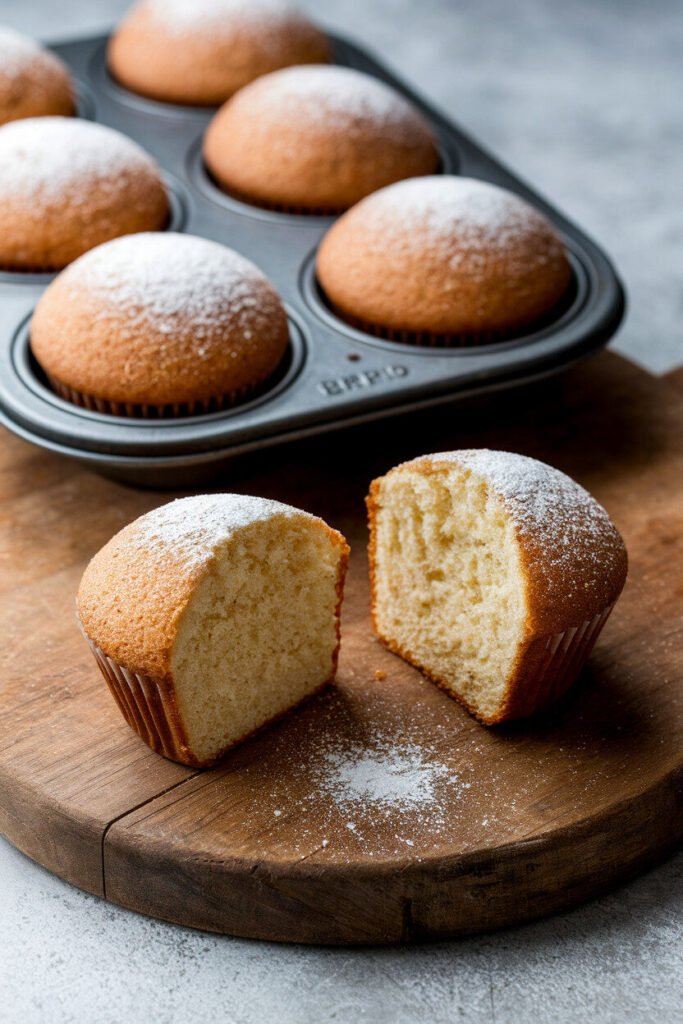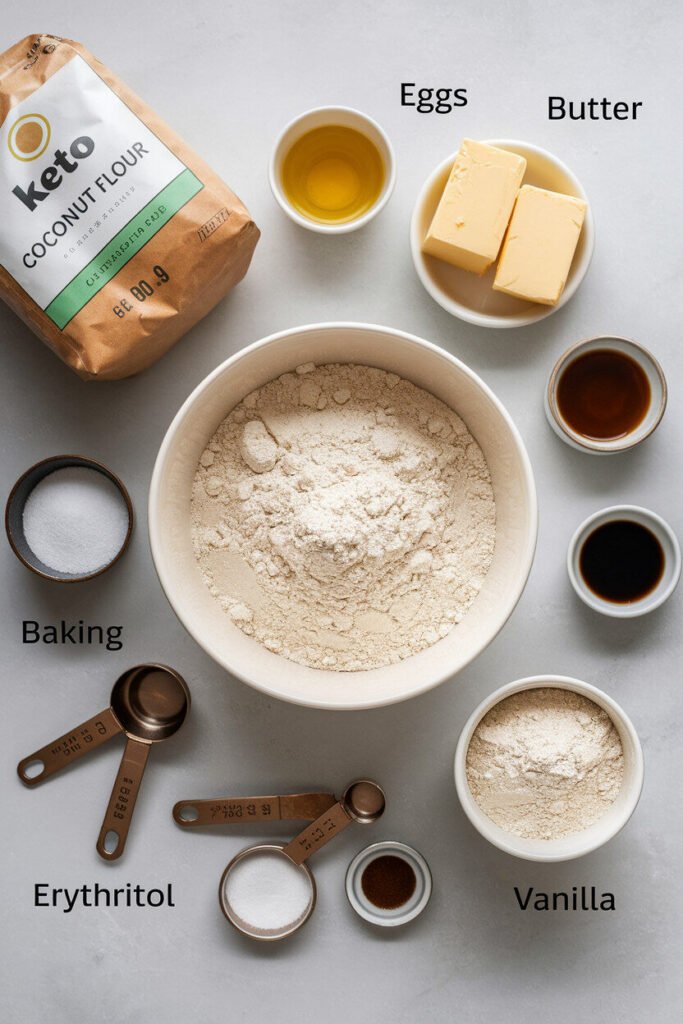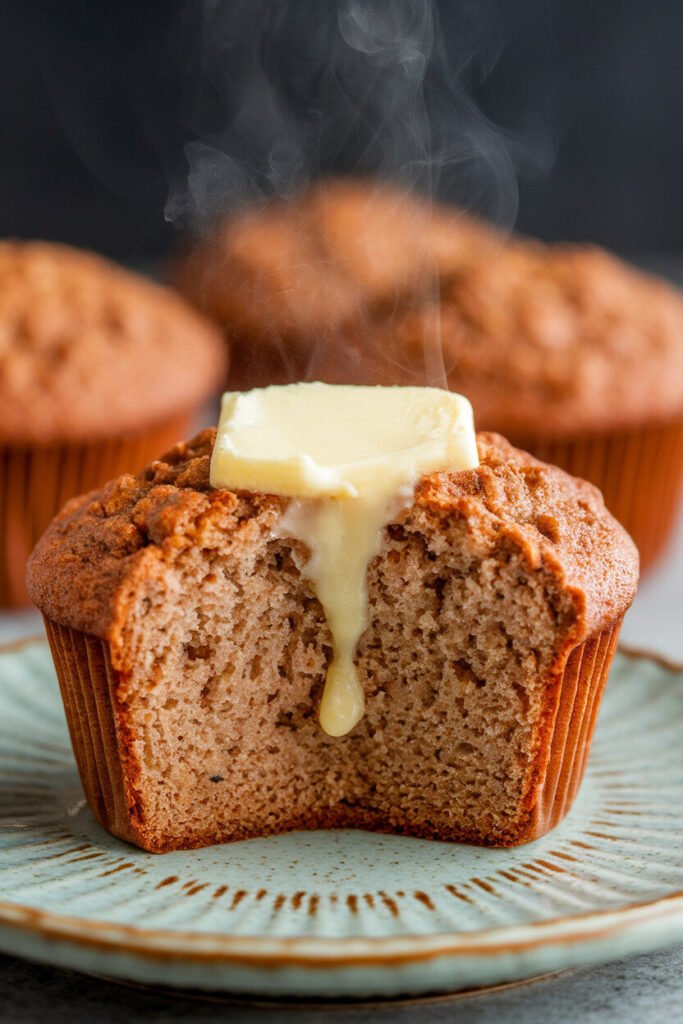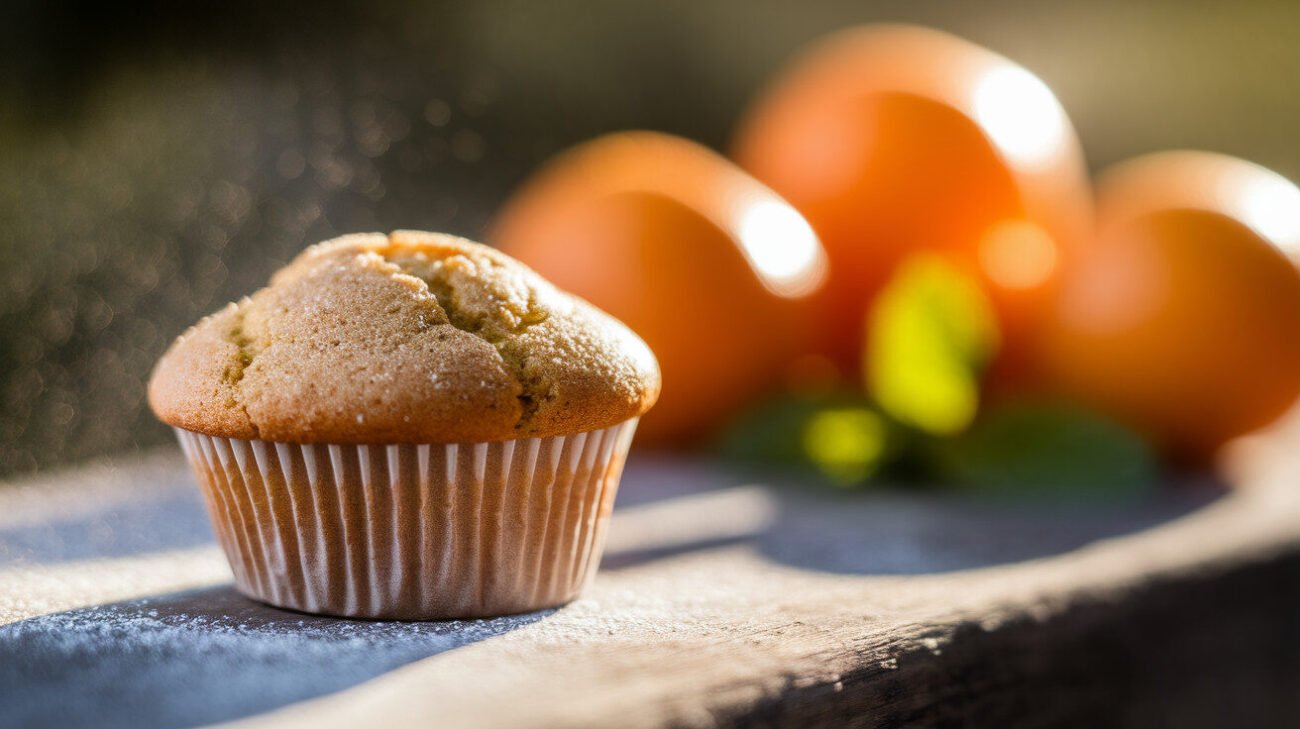You know what drives me absolutely crazy? Opening Pinterest, seeing these gorgeous “easy keto muffin” photos, then spending $15 on ingredients only to end up with dry, eggy hockey pucks that even my dog wouldn’t eat. I’ve been in the keto recipe development space since 2017, and I’ve probably tested over fifty different coconut flour muffin variations across multiple kitchens, altitude levels, and humidity conditions.
The truth is, most keto coconut flour muffins recipes are fundamentally flawed because they treat coconut flour like a 1:1 substitute for regular flour. It’s not. It’s this incredibly absorbent, protein-rich, fiber-dense ingredient that behaves completely differently than anything else in baking. Once you understand its unique properties—and stop fighting against them—everything changes.
This recipe? This is what I actually make for my family on Sunday meal prep days. It’s the culmination of all those failed batches and successful experiments. We’re talking proper bakery-style texture with a tender crumb that stays moist for days, no weird erythritol aftertaste, and a method that’s genuinely foolproof if you follow the ratios.

Why Coconut Flour Makes Incredible Keto Muffins
I’ll be honest—when I first started keto baking, I avoided coconut flour like the plague. It seemed so finicky compared to almond flour. But then I realized something crucial: coconut flour creates a texture that’s actually closer to traditional wheat flour than almond flour ever could. Almond flour muffins often have this dense, sometimes greasy quality that never quite satisfies that “real muffin” craving.
The fiber content is what really makes coconut flour a keto superstar. We’re looking at about 10 grams of fiber per quarter cup versus almond flour’s 3 grams. That fiber isn’t just about net carbs—it’s what gives you that satisfying, substantial mouthfeel without the blood sugar spike.
The Science Behind Coconut Flour’s Absorbent Power
Here’s where most recipes fail spectacularly. Coconut flour is made from dried, defatted coconut meat that’s ground into an incredibly fine powder. During processing, the cellular structure becomes ridiculously porous—it can absorb five to six times its weight in liquid, maybe more depending on the brand.
The technical term is hygroscopic capacity, but what that means in practical terms is that coconut flour acts like a culinary sponge. It will pull every available molecule of moisture into its fiber matrix. This is why recipes with insufficient liquid create those dry, crumbly disasters people complain about. The flour literally steals moisture from the other ingredients.
I’ve tested hydration levels extensively in controlled kitchen environments—the difference between perfectly hydrated batter and a dry mess can be as little as two tablespoons of additional liquid. That’s how precise you need to be with this stuff.
Avoiding Common Coconut Flour Mistakes (The Wet-to-Dry Ratio)
The number one mistake I see in keto forums? People trying to substitute coconut flour 1:1 for almond flour. Just… don’t. You can’t. The protein structures, fat content, fiber density—they’re completely different animals. It’s like trying to use a sponge instead of flour.
After extensive testing, here’s the ratio that consistently works: you typically need about 1/4 cup coconut flour for every 1 cup almond flour called for in a recipe, plus additional eggs and liquid. The eggs are non-negotiable because they provide both structural protein and essential moisture.
Another critical error most people make: not letting the batter rest. Coconut flour needs time—usually 5-10 minutes—to fully hydrate. If you mix and immediately bake, you’ll get inconsistent texture because some flour particles haven’t absorbed liquid properly while others have. I always set a timer for 5 minutes after mixing—the difference in final texture is noticeable.
Gathering Your Simple Keto Muffin Ingredients
What I love about this recipe is its simplicity. You don’t need seven different specialty flours or obscure ingredients you’ll use once then forget in the back of your pantry. These are pantry staples for most keto households.

Dry Ingredients for Perfect Structure
- 1/2 cup coconut flour (I prefer Anthony’s or Nutiva for consistent grind)
- 1/3 cup granulated erythritol (or monk fruit blend – your choice)
- 2 teaspoons baking powder (make sure it’s fresh – test it if unsure)
- 1/4 teaspoon fine sea salt (enhances flavor dramatically)
- Optional: 1/2 teaspoon cinnamon or 1 teaspoon lemon zest
About the baking powder—this is crucial for proper rise. Coconut flour batters are heavy, so you need adequate leavening. I always use double-acting baking powder because it gives you that initial lift when mixed and another burst during the baking process. If your baking powder is older than six months, honestly, just replace it.
Wet Ingredients for Moisture & Flavor
- 6 large eggs at room temperature (seriously, room temp makes a difference)
- 1/2 cup melted butter or coconut oil (cooled slightly)
- 1/3 cup unsweetened almond milk or coconut milk
- 1 teaspoon vanilla extract
- 1 teaspoon apple cider vinegar (sounds weird, I know—but it helps with rise)
The egg quantity seems insane, I get it. But coconut flour needs those eggs for structure, moisture, and binding. The proteins coagulate during baking, creating the framework that holds everything together. Without enough eggs, you get crumbly messes that fall apart when you look at them.
Optional Add-Ins for Customization
This is where you can make these muffins your own:
- 1/2 cup sugar-free chocolate chips (Lily’s stevia-sweetened works well)
- 1/2 cup fresh or frozen blueberries (adds about 1g net carb per muffin)
- 1/4 cup chopped pecans or walnuts
- Zest of one lemon or orange for brightness
- 1/4 cup unsweetened shredded coconut
The beauty of this base recipe is its adaptability. I’ve made countless variations for clients with different preferences, and the structure holds up remarkably well with additions—as long as you don’t go overboard with wet ingredients like mashed banana or pumpkin puree without adjusting the flour.
Step-by-Step Foolproof Baking Method
This method isn’t complicated, but there are specific technique points that genuinely matter. I’ve refined this process through literally hundreds of batches—this is what actually works versus what looks good in theory.
Step 1: Combining Your Dry Ingredients Properly
Preheat your oven to 350°F (175°C). Line a muffin tin with 9 parchment liners—don’t use all 12 cavities, these need space to dome properly.
In a medium bowl, whisk together the coconut flour, sweetener, baking powder, and salt. Whisk for at least 30 seconds—this isn’t just mixing, it’s aerating the coconut flour which significantly improves final texture.
If you see any lumps, sift the mixture. I know sifting seems fussy, but coconut flour tends to clump, and those dry pockets will ruin your muffin texture. Trust me on this one.
Step 2: Creating the Perfect Muffin Batter Consistency
In another bowl, whisk the eggs until they’re uniform in color and slightly frothy. Add the melted butter (cooled slightly so it doesn’t cook the eggs), almond milk, vanilla, and vinegar. Whisk until everything is well combined.
Now, add the wet ingredients to the dry ingredients. Mix with a spatula until just combined—no overmixing. The batter will be thicker than traditional muffin batter, but should be easily scoopable. If it seems too thick (this can vary by coconut flour brand), add another tablespoon of almond milk.
Here’s the critical part almost everyone misses: let the batter rest for 5 full minutes. The coconut flour will absorb liquid and thicken further. This hydration period makes a dramatic difference in final texture—it’s the difference between good and great muffins.
Step 3: Baking & Testing for Doneness
Divide the batter among the 9 muffin cups—they should be about 3/4 full. Bake for 18-22 minutes. Rotate the pan halfway through for even baking.
They’re done when the tops are golden and spring back when lightly pressed. A toothpick inserted should come out clean or with a few moist crumbs.
Don’t overbake! Coconut flour continues to set as it cools, so what seems slightly underdone in the oven will be perfect after cooling. I can’t emphasize this enough.
Step 4: Cooling for the Perfect Texture
This might be the most overlooked step in keto baking. Let the muffins cool in the pan for 5 minutes, then transfer to a wire rack to cool completely.
I know it’s tempting to eat them warm, but coconut flour muffins need this cooling time to fully set their structure. If you try to eat them too soon, they might seem eggy or have a fragile crumb that falls apart.

Pro Tips for Storage & Serving
Okay, you’ve made perfect muffins. Now let’s talk about keeping them that way and serving them like a pro.
How to Store for Maximum Freshness
Once completely cooled, store in an airtight container at room temperature for 2 days or in the refrigerator for up to a week.
For longer storage, freeze them. Individually wrap each muffin in plastic wrap, then place in a freezer bag. They’ll keep for 3 months frozen.
The refrigeration is important—because of the high moisture content, these can mold faster than traditional muffins if left at room temperature too long. I learned this the hard way with a batch I’d planned to use for a client photoshoot.
Reheating for That Fresh-Baked Feel
My absolute favorite method: slice the muffin in half and toast it. The slight crispiness on the edges is fantastic and revives that fresh-baked texture beautifully.
For frozen muffins, microwave for 30-45 seconds or thaw overnight in the refrigerator.
You can also warm them in a 300°F oven for 8-10 minutes if you’re serving several and want to recreate that fresh-from-the-oven experience.
Frequently Asked Questions
Why are my keto coconut flour muffins dry?
Almost always too much coconut flour or not enough liquid. Coconut flour brands vary in absorbency, so you might need to adjust liquid slightly between brands. Also, overbaking is a common culprit—coconut flour continues to dry out as it bakes, so err on the side of slightly underdone.
Can I substitute almond flour for coconut flour?
No, not directly. The absorbency and protein content are completely different. If you want almond flour muffins, you need a different recipe with completely different ratios. Trust me, I’ve tried every substitution ratio imaginable—it just doesn’t work well.
Why did my muffins sink in the middle?
Usually too much leavening or underbaking. Also, if you open the oven door too early during baking, the temperature drop can cause collapse. Make sure your baking powder is fresh and measure accurately—I use a kitchen scale for baking powder because measuring spoons can be surprisingly inaccurate.
Can I make these muffins dairy-free?
Absolutely. Use coconut oil instead of butter, and make sure your chocolate chips or other add-ins are dairy-free. The texture will be slightly different but still excellent. I actually prefer the coconut oil version for a more pronounced coconut flavor.
How many net carbs are in each muffin?
Approximately 3g net carbs per muffin (based on 9 muffins). This will vary slightly depending on your specific ingredients and any add-ins. I use Cronometer for precise calculations with my exact brands.
Can I freeze these keto muffins?
Yes, they freeze beautifully. Wrap individually and freeze for up to 3 months. Thaw at room temperature or microwave briefly. The texture holds up remarkably well to freezing—sometimes I think they’re even moister after freezing and thawing.
Over 500 Delicious Healthy Keto Recipes. From Snacks and Appetizers, to Main Dishes, to Drinks and Desserts. Great recipes for Losing Weight, Improving Your Health, and Staying in the Ketogenic Zone.
Andreas – Keto recipe creator who lost 40lbs and discovered his love for low-carb cooking. 300+ tested recipes | 5 years of keto experience | Real food for real people. No certifications, just results that taste amazing!
